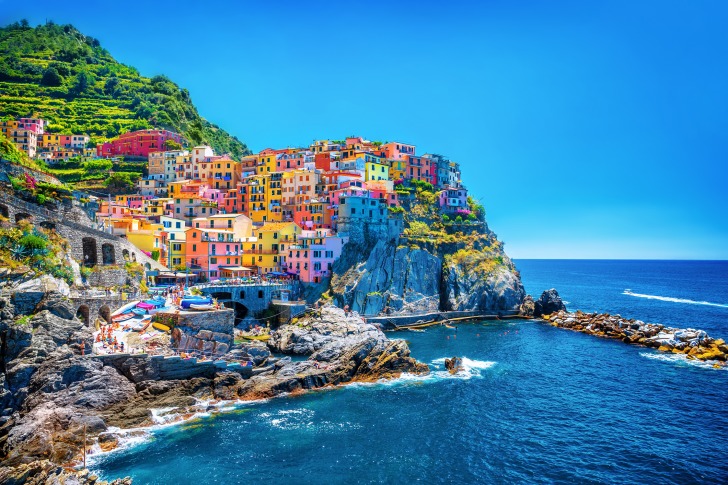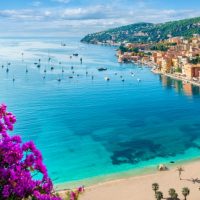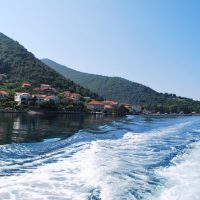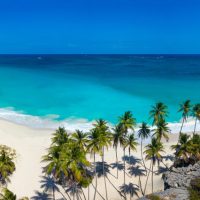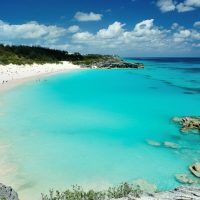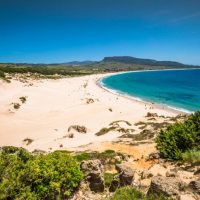Europe has so much to offer travelers.
In addition to a rich culture and history, the continent has 22,000 beaches.
European beaches allow you to enjoy the beauty of sand and sea.
At the same time, you are nearby incredible attractions, from Elizabethan castles to the Eiffel Tower.
No matter what type of beachgoer you are, you are sure to find a beach that’s perfect for your next vacation.
Contents
- 11 Best Beaches in Europe
- 1. Calanque d’en Vau, Cassis, France
- 2. Haukland Beach, Norway
- 3. West Beach Scotland
- 4. Palombaggia Beach, Corsica, France
- 5. Playa Jardin, Canary Islands, Spain
- 6. Barafundle Bay, Stackpole, Wales
- 7. Navagio Beach, Greece
- 8. Rauðasandur, Iceland
- 9. Pinizule Beach, Cape Kamenjak, Croatia
- 10. Whiterocks Beach, Portrush, Ireland
- 11. Praia da Marinha, Algarve, Portugal
- Frequently Asked Questions
11 Best Beaches in Europe
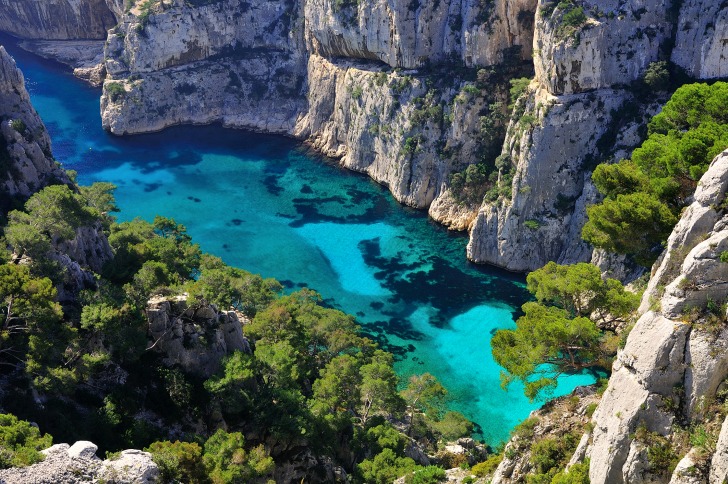
1. Calanque d’en Vau, Cassis, France
If you are in southern France, you can’t miss Calanque d’en Vau.
A Calanque is an inlet in the Mediterranean.
These areas are known for their white limestone cliffs and clear teal seas.
D’en Vau is considered the most beautiful Calanque.
It can only be accessed by boat or a challenging but rewarding hike.
Reaching the beach from Cassis Harbor takes about 2 hours.
If you prefer, you can begin at Port Miou, which cuts the hike in half.
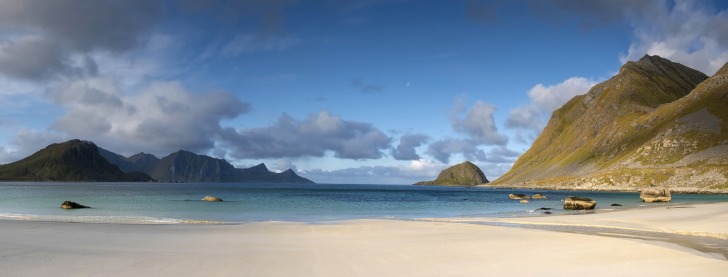
2. Haukland Beach, Norway
If you prefer an arctic paradise to a tropical beach, you should visit Haukland Beach, Norway.
This beach is located on the archipelago of Lofoten.
You’ll find icy blue water and cream-colored sand.
The beach is surrounded by mountains, offering a breathtaking contrast to the smooth beach and crystal clear water.
Activities include hiking, kayaking, and fishing.
However, you’ll need a wet suit before you jump in.
The water temperature doesn’t rise above 59 degrees Fahrenheit.
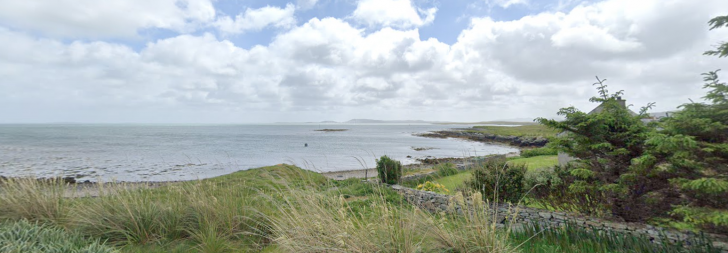
3. West Beach Scotland
West Beach in Scotland is one of the remotest beaches in Europe.
It’s located on the Outer Hebrides, which is a 130-mile string of islands.
West Beach features 3 miles of white sand, created from broken seashells.
It’s contrasted by a deep turquoise sea.
Along the beach, you’ll find sand dunes and machair, which is a grassy plain.
You’ll find a large assortment of flowers, including orchids.
Wildlife on the island includes playful otters and porpoises in the water, and a variety of seabirds on the beach and in the sky.
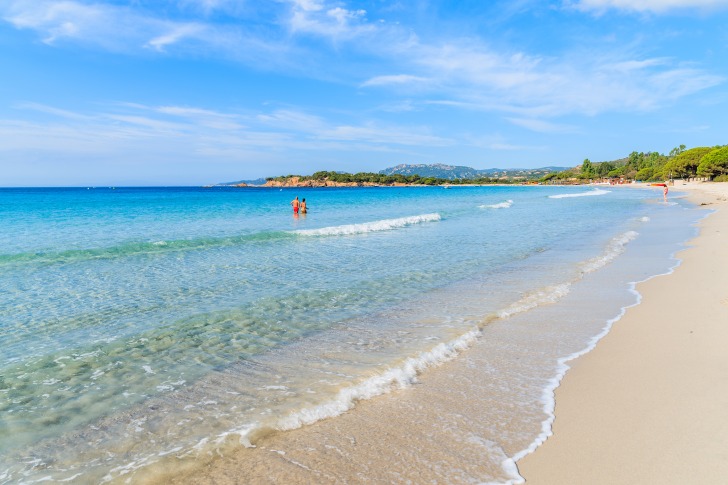
4. Palombaggia Beach, Corsica, France
Palombaggia Beach in Corsica, France, is one of the most beautiful beaches in Europe.
It’s an idyllic Mediterranean paradise.
You’ll find sparkling white fine sand, turquoise waters that are crystal clear, and orange rocks.
It’s a semi-circular cove and features umbrella pines as well.
The pink granite rocks are at their best in the morning and afternoon light.
The sun hits the rocks and brings out the pink, orange, and red hues.
The beach is 2km long and features a few restaurants you can enjoy.
You can also find hotels within walking distance of the beach.
5. Playa Jardin, Canary Islands, Spain
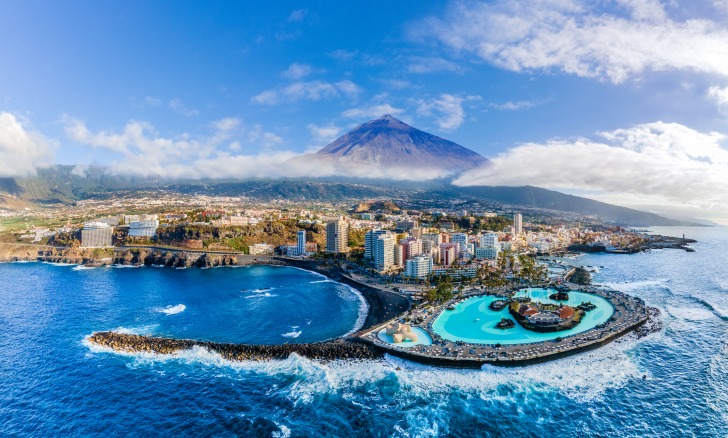
Tenerife is the largest of the Canary Islands, off the coast of Spain.
Playa Jardin is in the town of Puerto de la Cruz, which is a popular tourist town.
Most beaches are naturally formed, but Playa Jardin was designed by César Manrique.
Visitors enjoy breathtaking views of Mount Teide.
The beach features black volcanic sand.
Breakwaters were created to allow swimmers to relax, rather than fight the currents.
To access the beach, you’ll stroll through a stunning garden with local plants, rock walls, and waterfalls.
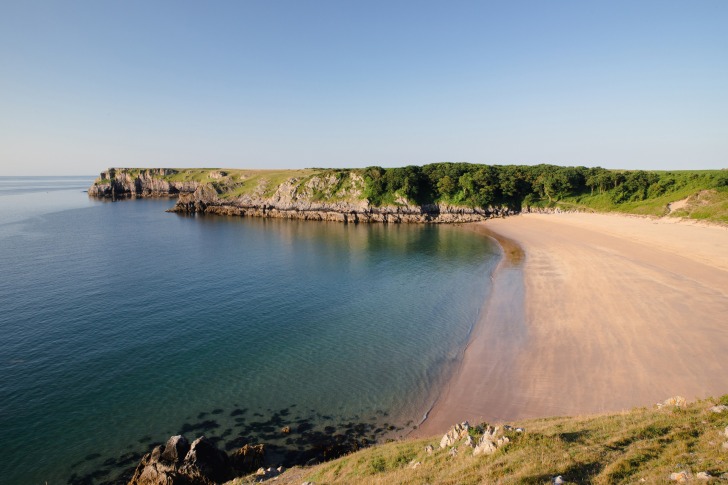
6. Barafundle Bay, Stackpole, Wales
Barafundle Bay is located in Stackpole, Wales.
It’s considered one of the best beaches in the U.K, and arguably, the world.
Its remote location keeps the area from becoming crowded, offering an unspoiled natural experience.
To reach the beach, you’ll need to hike steep steps and a footpath.
This walk is considered part of the charm of the beach.
You’ll find a cafe and bathroom facilities at the National Trust Car Park, which is 1/2 a mile from the beach.
If you head into Stackpole Village, you can visit the local pub.
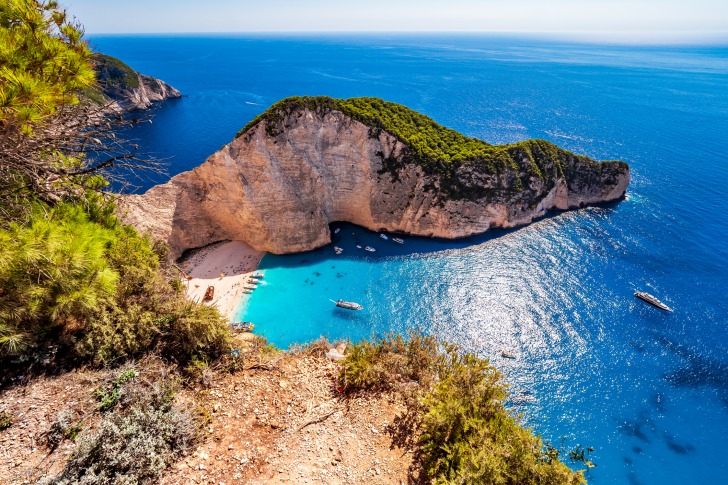
Navagio Beach, Greece features a stunning beach complete with a shipwreck.
It’s one of the most photographed sites in Greece. It’s located on the Ionian island.
The cove is at the bottom of a sheer rock face.
Over the years, the sand has collected around the shipwreck, so the ship looks like it’s stranded on the beach.
In addition to the ship, you’ll enjoy the white rock face, cream-colored sand, and bright blue crystal-clear water.
To get to the cove, you’ll need to take a boat ride from Porto Vromi.
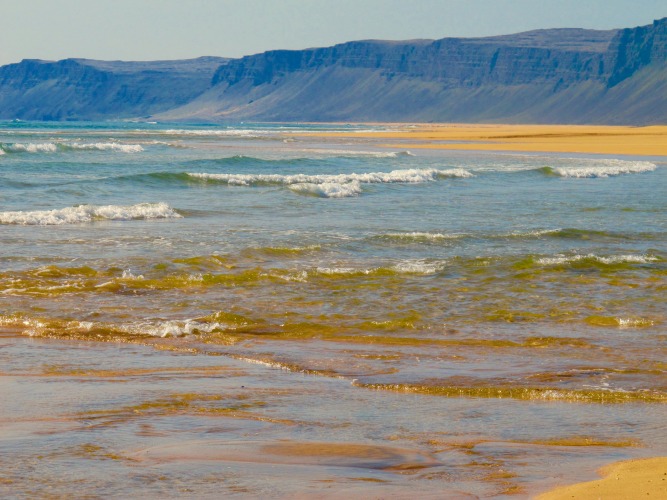
8. Rauðasandur, Iceland
Rauðasandur Beach, Iceland, translates to red beach.
It’s located in the Westfjords of Iceland.
The majority of the beaches in Iceland are black, thanks to volcanic sand.
The beach gets its unique color from pulverized scallop shells.
The sand ranges in color from red, yellow, orange, and brown, depending on the time of day and the lighting conditions.
You’ll find sheer cliffs in the distance and grasslands at the edge of the beach.
You may spot local wildlife, including sheep and seals.
The beach is more than 6 miles long.
Visitors can walk for miles, without finding the end of the beach.
It’s a very remote and quiet location.
It’s not well known outside of Iceland, so you are unlikely to find it in tourist guides.
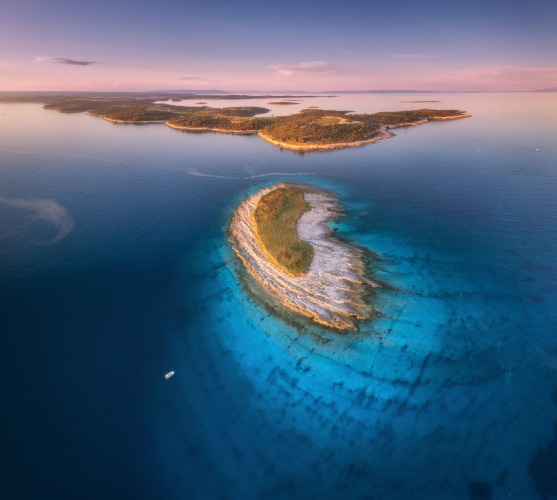
9. Pinizule Beach, Cape Kamenjak, Croatia
Croatia is a Mediterranean country known for its incredible beaches.
Cape Kamenjak is located near the small city of Premantura.
It’s one of the top tourist destinations in Croatia.
Instead of one beach, Cape Kamenjak offers many small beaches, that are closely connected.
There are nearly 20 miles of rugged coastline to enjoy.
Pinizule Beach is one of the most popular.
It’s a pebble beach and is accompanied by a signature Mediterranean pine forest.
You’ll find some of the best snorkeling in Europe here.
You can also take the dinosaur trail, which allows you to see dinosaur footprints and offers opportunities to find ancient fossils as well.
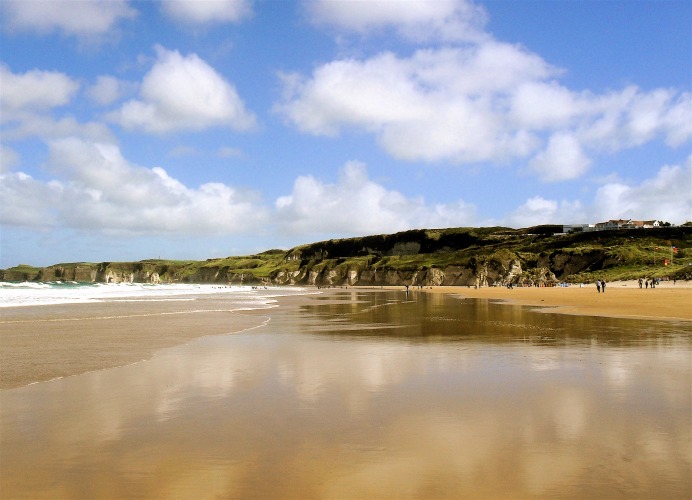
10. Whiterocks Beach, Portrush, Ireland
Ireland has nearly 1,900 miles of coastline, so you’ll find a stunning array of beaches here.
Whiterocks Beach goes from Curran Strand to East Strand in Portrush.
The 2 mile-long beach features white limestone cliffs and Dunluce Castle.
It also offers views of the Scottish Isles, Donegal, and the Atlantic Ocean.
One of the best features of the beach is the cliff formations.
You’ll find arches, waterfalls, and unique formations, including Lion’s Paw, and Elephant Rock.
You’ll find an array of caves as well, which are often only accessible from the sea.
The beach is very popular with surfers, thanks to the strong tides.
Bodyboarders, scuba divers, snorkelers, and kayakers also enjoy the area.
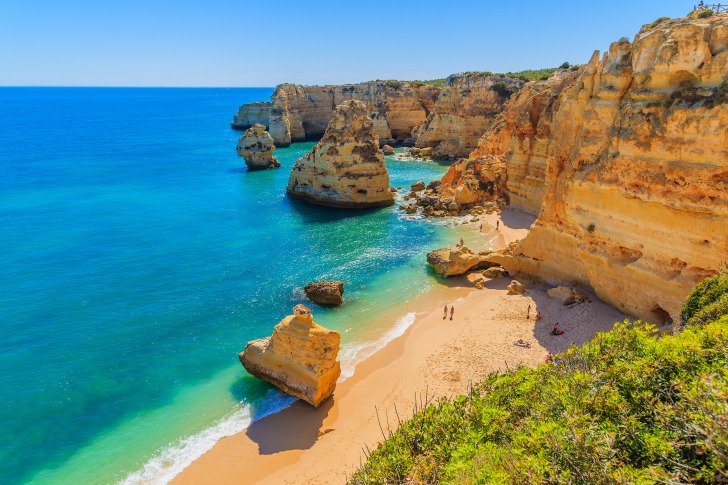
11. Praia da Marinha, Algarve, Portugal
Considered the best beach in Portugal by many, Prai da Marinha offers a Mediterranean paradise.
Golden cliffs are met with azure blue waters.
Before hitting the beach, you should check out the view from the cliffs.
From the top, a long stairway will bring you to the beach.
During low tide, you can stroll down the right side of the beach until you find M Rock, also known as the Cathedral.
This rock formation is shaped like an M or a pair of arches.
The waters are relatively calm, and the cliffs protect beachgoers from harsh winds.
It’s family-friendly, and usually not very crowded.
If you are active, you can choose a walking trail to the West or East.
Snorkeling is also popular at Prai da Marinha, but you’ll need to bring your own gear.
Frequently Asked Questions
Is There a Dress Code for Beaches?
Many cities in Europe, particularly the Mediterranean, are enforcing a dress code.
Swimsuits are expected at the beach, and many allow men and women to be topless.
However, once you leave the beach, you’ll need to wear regular clothing or a bathing suit coverup.
Should You Bring Food and Drink?
To some extent, this depends on your location.
Generally, busier beaches will have cafes or restaurants.
However, you can expect to pay handsomely for the convenience.
Popular destinations may also require reservations, particularly during peak tourist times.
It’s a great idea to pack a cooler of drinks and snacks, and it’s a common practice in Europe.
Collapsible coolers are light and easy to travel with, making them a great choice.
How Do I Decide Which Beach to Visit?
With so many great European beaches, it can be difficult to make a decision.
Consider whether you want a busy beach or a secluded one.
Do you dream of frigid waters and sheer cliff faces?
Do you want to have an adventure surfing?
You should also consider other local sites and attractions when deciding which beach to visit.
What Do I Need to Bring to the Beach?
There are a few other items you should consider bringing.
Many tourists assume they will be able to find anything they need at the beach, and this isn’t always the case.
Bring snorkeling gear if you plan to get into the water.
The crystal clear waters are excellent for snorkeling.
Water shoes are important because the sand and pebbles can become hot enough to burn your feet.
Lastly, a beach chair and umbrella can make your beach day more enjoyable.
